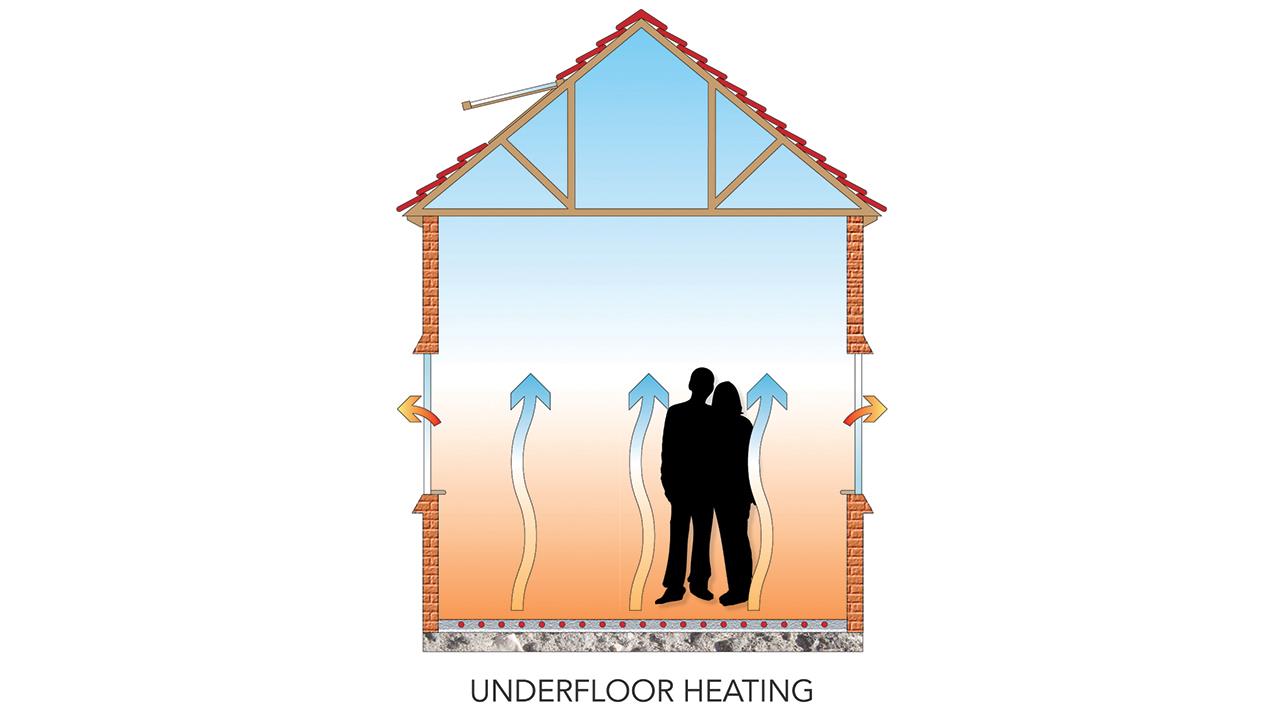

The upcoming changes to Part L, due to be implemented in 2022, are an interim step on the way to 2025. The ultimate aim is that the average new home produces at least 75% fewer CO2 emissions than one built to current energy efficiency requirements.
This first set of changes will mandate a 31% reduction in CO2 emissions from new dwellings, compared to current standards. This means that all new heating systems will have to be designed with a maximum flow temperature of 55°C or lower.
In addition, there will be a requirement for self-regulating, zoned, control devices. While there is flexibility on how to meet the targets, and there are a variety of renewable energy sources available, the government expects heat pumps to become the primary heating technology for new homes.
How UFH meets the challenge
By their very nature, hydronic (water-based) underfloor heating systems can easily comply with the new, upcoming requirements, but also present other benefits both for the installer and the homeowner.
Since underfloor heating covers a greater surface area than radiators, systems are designed to run at a lower temperature (35-55°C rather than 80°C for gas boilers) 24 hours a day, for maximum efficiency. This means UFH can perfectly accommodate the optimal coefficient of performance (COP) for heat pumps, which is attained when they run at 35°C. UFH can also be fully zoned, which ticks a crucial regulatory box and ensures less energy is wasted.
Compared to traditional gas boiler systems, accuracy is critically important in the design and installation of a heat pump system to ensure efficiency, and avoid inflated energy bills. Yet, when we timed the installation of underfloor heating and radiators in 100 units, underfloor heating proved 15% quicker to install.
Hidden value for homeowners
Beyond compliance to the coming changes, and thermal comfort, installers can also promise homeowners that they will benefit from reduced running costs.
A UFH system will be between 15% and 40% cheaper to run compared to traditional convection radiators. It will also require very little maintenance and is likely to outlive the building itself. For example, we offer a 75 year warranty on our pipework, whereas typical radiators are expected to be replaced every 15 to 20 years.
Aside from future-proofing new properties in line with the incoming Part L revisions, UFH also offers a host of safety, health, and wellbeing benefits.
The absence of radiators makes every space in the home that little bit safer, while air quality within the property is also improved through a significant reduction of household particle movement.
As the way we heat our homes is about to change drastically, UFH is uniquely positioned to help installers and homeowners meet the regulatory challenges dictated by the government’s response to the climate crisis. Be ready to embrace the season of change.
If you'd like to keep up-to-date with the latest developments in the heating and plumbing industry, why not subscribe to our weekly newsletters? Just click the button below and you can ensure all the latest industry news and new product information lands in your inbox every week.